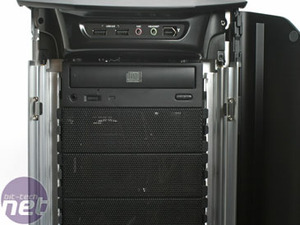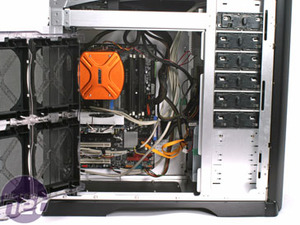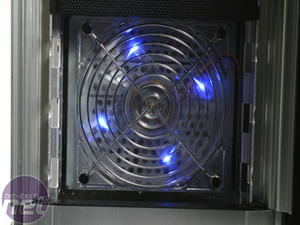Cooler Master 830 Custom and 832
April 24, 2007 | 11:12
Companies: #coolermaster #cooler-master #smooth-creations

Installation and Testing
Setting up a system is one of the standard tests we run on a new case, and is the most important. It simulates your initial system build and also highlight just how easy future upgrades will be.The 832 follows from the 830 again in how easy it is to install a system inside. It is an essentially screwless case, with a system of plastic latches that allow the motherboard tray to be removed. This motherboard tray was one of the best I've ever seen, coming complete with a paper insert on the tray that highlights where the standoffs will need to be inserted depending on your motherboard. It's a simple thing, but it made mounting the board much less of a chore.
Another interesting thing about the 832 motherboard tray, again carried over from the 830 but still worth mentioning, is the fact that the tray is reversible so that the motherboard can be re-mounted for access from the other side of the case. It's not incredibly useful in most situations, but if you find you need to put your PC in a corner and still need to access it regularly then this could stop your sanity from crumbling.
Because the motherboard tray was so easy to remove and use installing a system in the Stacker 832 was completed quickly and with minimum fuss. In fact, the hardest part of it all was lifting the final system up for photography.
The main thing we're interested in when we test a case is airflow and how the case handles heat. It can be the best looking case in the world, but if it doesn't let heat dissipate properly then you'd better hope that your case looks good with smoke coming out of it as well.
Test Specification
CPU: Intel Pentium XE 955 (dual-core, 3.46GHz with Asus Silent Square heatsink)Graphics Card: Sapphire Radeon X1600 XT
Motherboard: Asus P5WD2-E Premium
RAM: 2x 512MB Corsair XMS2 DDR2-667)
Optical drive: Sony CD-RW Drive
Hard-Drive: 1x 240GB Hard drive
Once that was installed, we then set about stressing the new set up. To do this, we used a combination of programs to stress the RAM and then the CPU, monitoring how the CPU temperature rose and how the temperature inside the case differed from the ambient. When all of that is said and done, we run some Real-time HDR image-based lighting demos to see how the GPU is affected by heat.

MSI MPG Velox 100R Chassis Review
October 14 2021 | 15:04












Want to comment? Please log in.